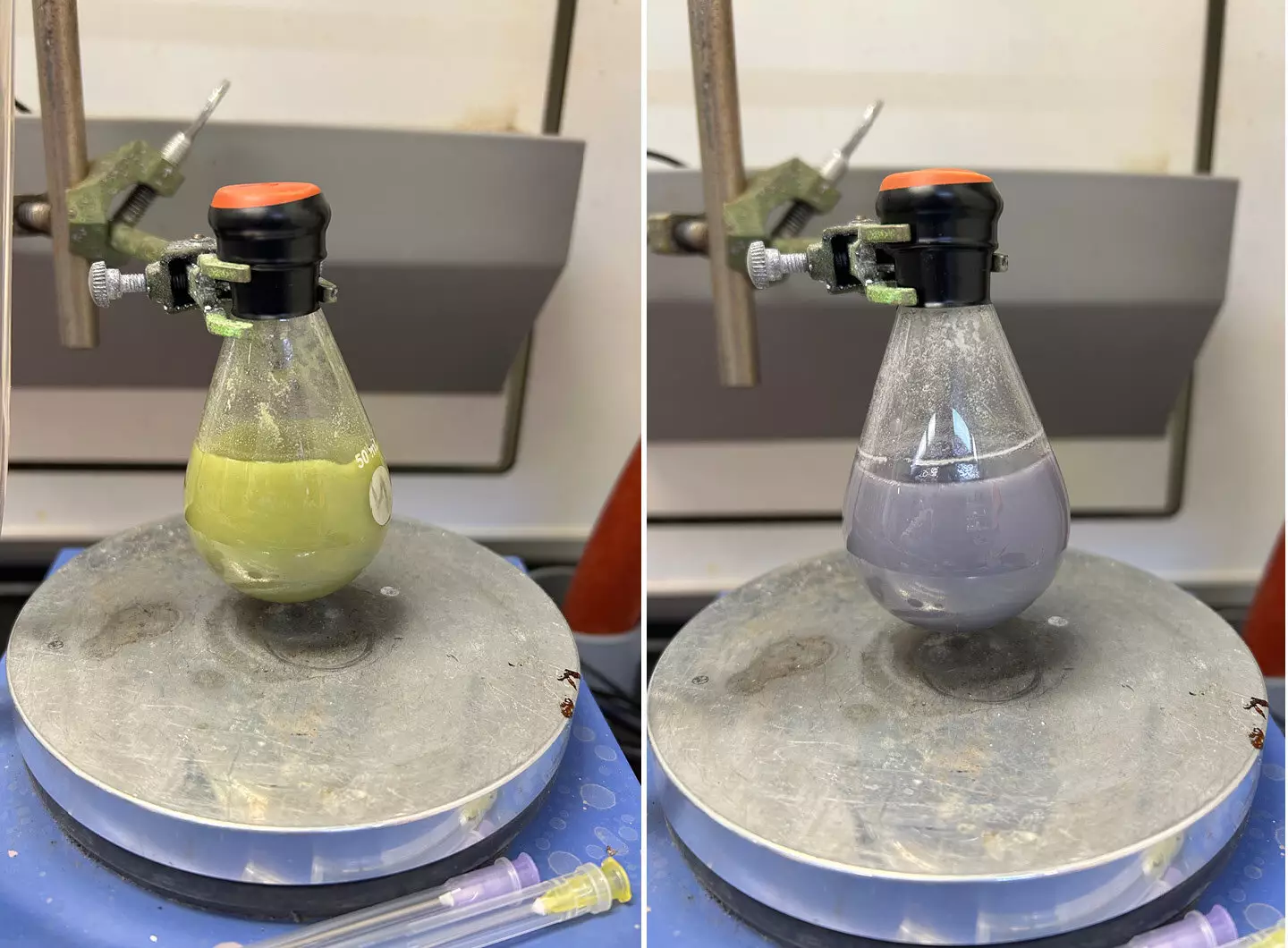Samarium, a metallic element discovered in a Russian mine in 1879, has shown incredible potential as a chemical reagent for synthesizing molecules with pharmaceutical applications. Named after the mineral samarskite, which in turn was named after Russian mining engineer Vassili Samarsky-Bykhovets, samarium has been a key component in the creation of new pharmaceuticals.
The most common form of samarium reagent is samarium diiodide, consisting of one samarium atom and two iodine atoms. However, the challenge has been scaling up the production of this versatile reagent for industrial use. Due to its sensitivity to air, the reagent often needs to be freshly prepared in large quantities just before a reaction, making it impractical for industrial-scale processes.
In a recent study published in the journal Science, Caltech chemists have found a solution to this scaling-up challenge. By enabling samarium diiodide to recycle itself within a single reaction, the need for large amounts of solvents and fresh preparations is eliminated. This breakthrough opens the door for the translation of academic research on samarium reagents into industrial processes and product development.
One of the main obstacles to using samarium reagents on an industrial scale has been the formation of a stubborn samarium-oxygen bond during reactions, rendering the reagent inactive. Previous attempts to break this bond involved harsh chemicals, but the Caltech researchers found a way to cleave the bond using a mild acid, making the process more practical for large-scale reactions.
The collaboration between the Reisman and Peters labs at Caltech exemplifies the interdisciplinary approach to solving challenges in chemical synthesis. By combining expertise in nitrogen fixation and samarium reagents, the researchers are paving the way for more efficient and sustainable chemical processes. The ability to recycle samarium diiodide and break the samarium-oxygen bond opens up new possibilities for industrial applications in pharmaceutical synthesis and other fields.
The recent breakthrough in recycling samarium diiodide for industrial-scale reactions represents a significant advancement in the field of chemical synthesis. By overcoming the limitations of the samarium-oxygen bond and developing practical methods for cleaving it, researchers are expanding the scope of possibilities for using samarium reagents in pharmaceutical and industrial chemistry. The collaborative efforts between different research groups highlight the importance of interdisciplinary approaches in addressing complex challenges in chemistry.


Leave a Reply